|
A Brief Overview of the Pullman Story Part 2
Trouble in the Model Town
"I believe a rich plunderer like Pullman is a greater felon than a poor thief, and it has become no small part of the duty of this organization to strip the mask of hypocrisy from the pretended philanthropist and show him to the world as an oppressor of labor...The paternalism of the Pullman is the same as the interest of a slaveholder in his human chattels. You are striking to avert slavery and degradation." Eugene V. Debs, President of ARU, speech of May 16, 1894
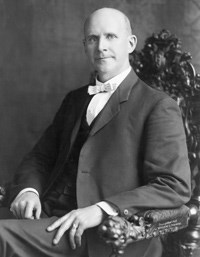
Library of Congress The American Railway Union (ARU) had formed in June 1893 in Chicago, with membership open to all white railroad employees of any profession. While other unions, such as the Brotherhood of Locomotive Firemen, focused on specific professions, the ARU embraced all related professions, even coal miners, longshoremen, and car-builders, if they were in the employ of a railroad. Pullman Company employees were eligible since the company owned and operated a few miles of railroad to access its factories. The structure of the union was one that encouraged democracy and settlement of grievances by mediation, recognizing that strikes were best avoided as they were destructive for both employers and employees. Under the leadership of President Eugene V. Debs, the union won some early victories and ranks swelled to 150,000 members. 
Library of Congress Pullman workers, who had formed a grievance committee to negotiate with the company, were getting nowhere, and, though ARU leadership advised against it, a strike broke out at the Pullman factories on May 11,1894. The timing was unfortunate, since the company could afford to withstand a work stoppage financially by relying on existing leases. Against the might of the Pullman Company, the cause of the workers seemed hopeless. The Pullman Company continued to resist any concessions in negotiations with the strikers, trying to wait them out. So the ARU decided to take a truly injurious action against the Pullman Company on a national scale: a boycott of the handling of Pullman cars by all ARU workers. 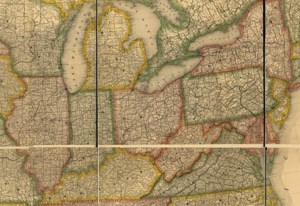
Library of Congress Because Pullman cars were in such wide use, the boycott crippled rail traffic nationwide. Workers across the country had also seen wage reductions and had cause to take action. The size and scope of the ARU was threatening to railroads. In response, the General Managers' Association, an industry group representing 24 railroads with terminals in Chicago, organized measures against the boycott. Those who walked off the job were replaced with strikebreakers, and the association tried to sway public opinion against the boycott through methods such as encouraging Pullman cars to be hitched to mail cars to disrupt delivery. 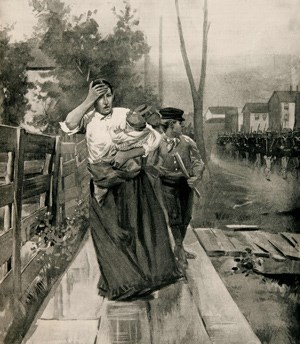
Library of Congress It was through disruption of the United States mail that the federal government was given an opening for intervention into the boycott and strike. The government was uncomfortable with the labor actions in general, part of a growing apprehension about the laboring classes by those in the propertied class during a period of economic hardship. An injunction against the boycott was secured on the grounds of the violent nature of the strike and the threat to interstate commerce, citing the Sherman Anti-Trust Law of 1890, which ironically had been adopted to combat monopoly by big business. 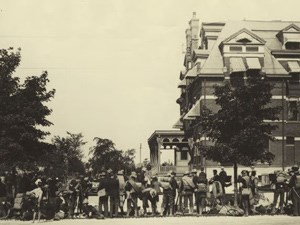
Illinois Historic Preservation Agancy Going over the head of Illinois Governor John Peter Altgeld, thousands of U.S. marshals and U.S. Army troops were deployed in what seemed an outsized response to the disturbance. In Chicago, mob activity increased with the military presence, with members from Pullman, but many more from other south side neighborhoods. Back in Pullman, the Pullman Company strikers' plight had been overshadowed on the national stage by the boycott. Fighting between the military and workers at rail yards in the Chicago area left dozens dead and more wounded. The injunction led to the jailing of key leaders, weakening the ARU and the strike. 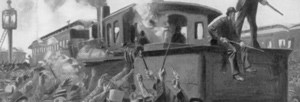
Library of Congress With the government working to the General Managers' Association's ends, Debs felt the only way to force the Pullman Company into arbitration was reaching out to other labor groups to join in a general strike, but his efforts did not succeed. The boycott dissolved in mid-July, and the ARU was defeated. For refusal to obey the injunction, Debs and others in the ARU were indicted for contempt. In late July, President Grover Cleveland appointed a commission to investigate the strike and boycott. The Legacy
"As important as is this lucrative contract as a labor victory to the Pullman porters, it is even more important to the Negro race as a whole, from the point of view of the Negro's uphill climb for respect, recognition and influence, and economic advance." G. James Fleming in the NAACP's Crisis, 1937
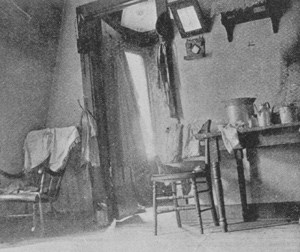
Library of Congress Though public sentiment had been against the boycott, George Pullman was roundly criticized for the policies that led to the strike and his refusal to enter into arbitration with his workers. The situation for those in Pullman remained dire, and while little effort was made to evict residents or collect rent in arrears, destitution was widespread. In his testimony before the investigative commission, however, George Pullman defended his model town and his decisions,though they had led to a strike which ultimately damaged the company and the strikers, and tarnished his image irreparably.
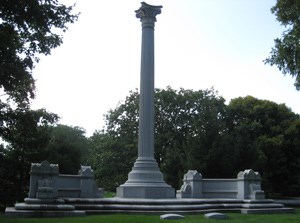
National Park Service If George Pullman entertained any doubts about the wisdom of continuing the company town experiment, they were not reflected in his actions. Company ownership and concern with the town's appearance continued under Pullman's direction until his death in 1897. Tons of steel and concrete were placed over his casket to prevent labor radicals from desecrating the grave. 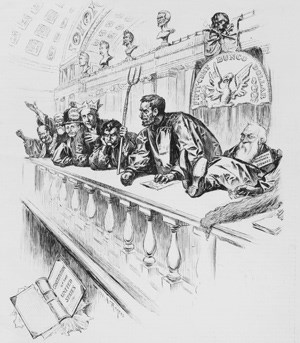
Library of Congress The impacts of the Pullman Strike were national in scope. As a massive and truly national strike, it demonstrated the power of national labor and forced consideration about labor action and corporate paternalism. Legally, the injunction against the strike affirmed a broad power of the federal government to ensure the free flow of interstate commerce, essentially making national strikes illegal.
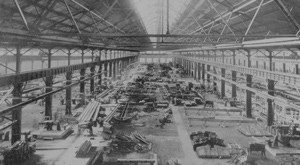
Library of Congress In October 1898, the Illinois Supreme Court ordered the Pullman Company to sell all non-industrial land holdings. Some holdings, such as the brickyard, sold quickly. The Illinois Central railroad had owned the right of way past the front of the factory; Lake Vista was filled and new tracks and a road installed. The company was granted a deferment on its deadline to sell most of the town, which mostly changed hands in 1907, with residents given the first option to buy. 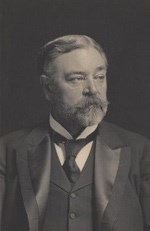
Library of Congress The Pullman Company, no longer in the landlord business, returned to success under the leadership of its second president, Robert Todd Lincoln. Union activity returned to Pullman, and just ten years after the explosive strike, in 1904 the company locked out union workers, defeating them easily and without larger incident. In 1900, the company began using metal frames for its cars, and by 1908 the company had converted to all steel construction. Over $5 million was invested in remodeling and enlarging the shops. As the company succeeded in the 20th century, the town it once supported floundered. As the housing stock uniformly aged and other neighborhoods grew around it Pullman lost population, and its community identity. 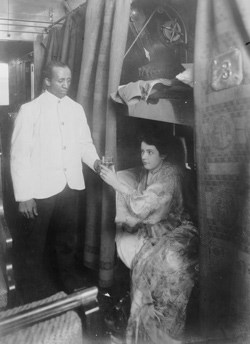
Library of Congress The 1894 Strike was not the last time the Pullman Company would be the epicenter of a contentious labor issue. In the early 20th century, the Brotherhood of Sleeping Car Porters (BSCP) strove for recognition of their union, a victory whose impact went beyond Pullman Porters to the African-American society on the whole. 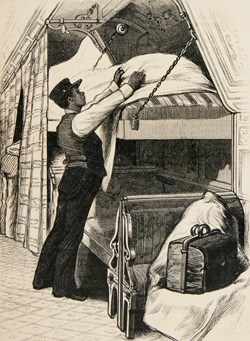
Newberry Library Operation of railroads across the country relied on different classes of workers: conductors and engineers in the "operating trades," construction and laborers, and service positions like porters, dining car waiters, and station ushers. The classes of railway workers were segmented along racial and ethnic lines. Workers in the railroad trades began forming "brotherhoods" in the 1860s and 1870s as a response to health and safety issues. Many of these brotherhoods codified these racial divisions, barring non-whites from membership. In general, African-Americans were confined to the service positions. 
Library of Congress Thus it was in the service positions that black trade unionism on the railroads began. The Brotherhood of Sleeping Car Porters was founded in 1925 in New York City, and for four decades was led by A. Philip Randolph. From outside the Pullman Company, he was not susceptible to their reprisals, and his powerful public speaking and work editing the Harlem, New York monthly The Messenger helped prepare him for the task. Porters comprised 44 percent of the Pullman rail car operation workforce, and Pullman was the nation's largest employer of African Americans. The porters, owing in part to their cosmopolitan experience, held positions of status and respect in the black community. The union faced tough opposition from a traditionally racist industry, an anti-union corporation, and initially from some in the black community. Many members of the African-American community feared economic reprisals, since the Pullman Company offered jobs to African-Americans and advertised in the black press. 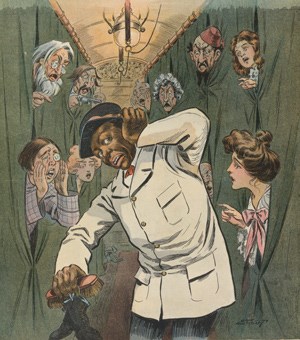
Library of Congress In 1937, the Pullman Company signed a contract with the BSCP, leading to higher salaries, better job security, and increased protection for workers' rights through grievance procedures. It was the first major labor agreement between an African-American union and a corporation. The NAACP's Crisis credited the victory for broad influence, saying, "As important as is this lucrative contract as a labor victory to the Pullman porters, it is even more important to the Negro race as a whole, from the point of view of the Negro's uphill climb for respect, recognition and influence, and economic advance." The BSCP also functioned as a civil rights organization through the 1960s. 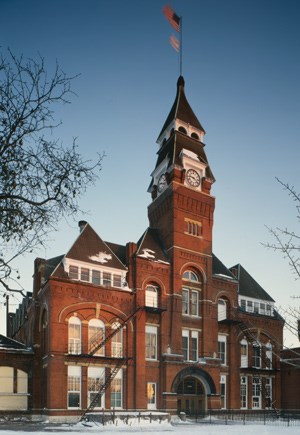
Library of Congress The Pullman Company factories consolidated and downsized through the 1940s, and the railroads discontinued sleeping car service in 1969. Cars and highway travel eclipsed passenger rail for short trips and commercial aviation eclipsed passenger rail for long distance travel. Although the company split apart and rail travel itself faded from prominence, the Pullman Company and the labor unrest it ignited remains prominent in the American memory of industrial and labor history. The causes of those developments and upheavals can still be seen in the architecture and landscape of Pullman's model town. |
Last updated: March 8, 2024
